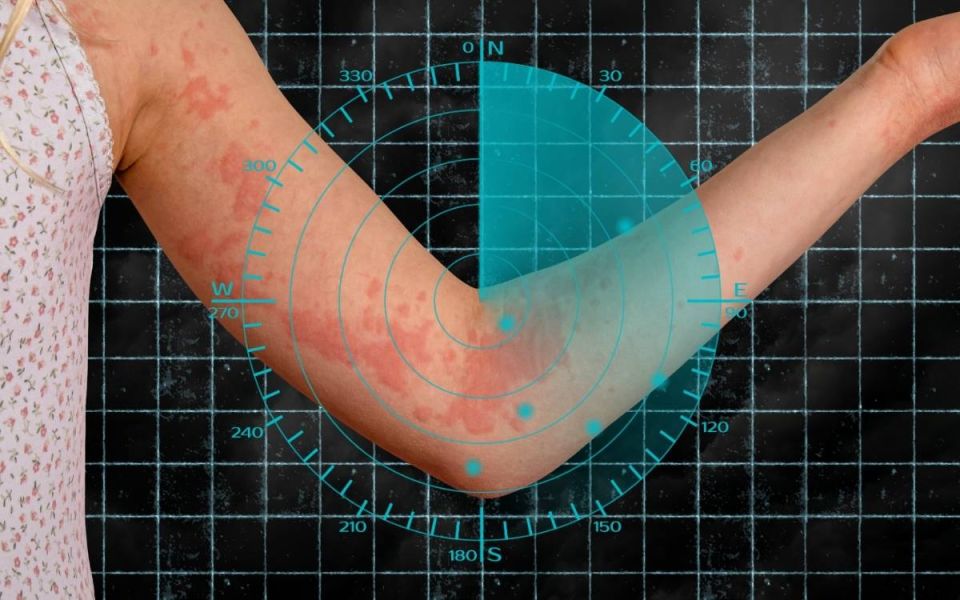What a Cold War Hero Can Teach Us About Chronic Hives

September 1983. The United States and the Soviet Union are locked into a cold war of potentially apocalyptic proportions. Both nations hoard tens of thousands of nuclear weapons; the Soviet Union alone has enough to bomb every single county in the U.S. - 11 times apiece. On top of this, the Soviets have shot down an airplane with a U.S. congressman on board and are afraid America will launch a nuclear strike.[1] In the midst, Stanislav Petrov, a lieutenant colonel in the Soviet Air Defence Forces, is monitoring data from an early warning satellite system. The system lights up with alarms blaring: it has detected a nuclear missile launch from North Dakota. The alarm sounds again, indicating five total missiles. Petrov has to decide whether to report this - and risk worldwide annihilation - or to ignore the threat and risk destruction of his country.
Stanislov Petrov served as a lynchpin in the Soviet air defence system; he needed to determine whether to pass on information, for good or ill. In the body, mast cells are immune cells similar to the Soviet air defense system, and inside the cells are receptors, enzymes, and proteins which act like the satellites, radar towers, people, and nuclear missiles that detect and respond to a perceived threat. Mast cells often have the difficult job of trying to sort through information, much of which is flawed and can lead to blisteringly bad results. Chronic spontaneous urticaria (CSU) is a condition where mast cells in the body drive an allergic or immune response to imagined threats.[2]
“Chronic” indicates that the condition lasts for more than six weeks, “spontaneous” means there is no known external reason for relapse (and is sometimes called “idiopathic”), and “urticaria” comes from the Latin word for a nettle and refers to the burning sensation common in this disease. Chronic spontaneous urticaria affects around 1% of people around the world, and rates are increasing.[3] It can affect anyone, though young and middle-aged women are at the highest risk.[3] The main symptoms of CSU are hives (called wheals) and/or skin swelling (called angioedema).[2] These come with itching, burning, tightness, occasional pain, and may last from 30 minutes to three days.[2] Many complications occur as fallout from wheals and angioedema:[3,4,5]
- Discomfort
- Sleep problems
- Loss of energy
- Interruptions to work and daily life
- Low quality of life
- Anxiety and depression
Much like the Soviet defense doctrine, it is unclear what exactly is going on in the body during chronic spontaneous urticaria. There can actually be several different underlying triggers for CSU: autoimmune problems, autoallergic issues, abnormalities in white blood cells, etc..[6] Regardless of what causes the initial glitch in danger identification, the next steps are a chain reaction hinging on a few lynchpin proteins. On the surface of mast cells are receptors which sense potential dangers and start a chain of signal interpretation and amplification. Mast cells rely on Bruton’s tyrosine kinase (BTK), a critical messenger in the mast cells’ threat response system, to release cell contents.[3,4] Mast cells are filled with signaling molecules, including allergic histamines, platelet-activating factors, and inflammatory cytokines.[2,6] When a mast cell perceives that there’s a threat, it releases these contents and starts a process that results in widening of blood vessels, leakage of blood into tissue, recruitment of immune cells, wheals, and angioedema.[2.4,6]
Currently, the first-line treatment for chronic spontaneous urticaria is antihistamines that target one of the main molecules released by mast cells: histamine.[2,4,5] If this doesn’t result in relief, a doctor may increase the dose by up to four times.[5] The next line of defense is targeting antibodies that can activate mast cells with the medication omalizumab.[3,4] If omalizumab doesn’t work or comes with too many side effects, the next step is ciclosporin, an immunosuppressive medication.[3] Unfortunately, around ⅓ of patients do not respond to or cannot tolerate any of these medications. Typically, CSU can last between two and five years, although around one in five patients experience symptoms that persist longer.[6]
Let’s return to 1983. Stanislav Petrov sees five incoming missiles that could kill millions of his comrades. Unknown to Petrov, the detection satellites are misinterpreting sunlight bouncing off high clouds as missiles.[1] He knows that a Soviet response would mean full-scale nuclear war however, and does not report the launches, deciding it must be a false alarm.[1] The U.S.S.R. doesn’t respond and Stanislav Petrov becomes “the man who saved the world.”[1] This demonstrates the power of a sufficiently tuned lynchpin in a complex system. Scientists have identified Bruton’s tyrosine kinase as a potential lynchpin for chronic spontaneous urticaria.[3,4] If a medication can suppress the release of mast cell contents, it may act as a Stanislav Petrov and stop false alarms from getting out of control to save the patient from years of misery.
Creative Director Benton Lowey-Ball, BS, BFA
|
Click Below for ENCORE Research Group's Enrolling Studies |
|
Click Below for Flourish Research's Enrolling Studies |
References:
[1] Isachenkov, V. (2017, September 19). Stanislav Petrov, who averted nuclear war, dies at 77. The Associated Press. https://apnews.com/general-news-b9de4e3c9a5949e4a27e8ea601059f25
[2] Zuberbier T, Abdul Latiff AH, Abuzakouk M, et al (2022) The international EAACI/GA²LEN/EuroGuiDerm/APAAACI guideline for the definition, classification, diagnosis, and management of urticaria. Allergy; 77:734-6. https://onlinelibrary.wiley.com/doi/full/10.1111/all.15090
[3] Gonçalo, M., Gimenéz‐Arnau, A., Al‐Ahmad, M., Ben‐Shoshan, M., Bernstein, J. A., Ensina, L. F., ... & Maurer, M. (2021). The global burden of chronic urticaria for the patient and society. British Journal of Dermatology, 184(2), 226-236. https://doi.org/10.1111/bjd.19561
[4] Jain V, Giménez-Arnau A, Hayama K, et al (2024) Remibrutinib demonstrates favorable safety profile and sustained efficacy in chronic spontaneous urticaria over 52 weeks. J Allergy Clin Immunol; 153(2):479-86 https://doi.org/10.1016/j.jaci.2023.10.007
[5] Balp, M.M., Halliday, A.C., Severin, T, et al (2022). Clinical remission of chronic spontaneous urticaria (CSU): A Targeted Literature Review. Dermatol Ther (Heidelb). Jan;12(1):15-27. https://link.springer.com/article/10.1007/s13555-021-00641-6
[6] Saini SS, Kaplan AP (2018) Chronic Spontaneous Urticaria: The Devil's Itch. J Allergy Clin Immunol Pract; 6(4):1097-106. https://doi.org/10.1016/j.jaip.2018.04.013



